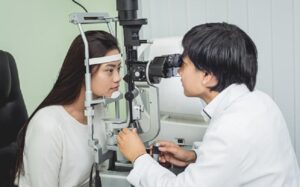
Urogynecology (also known as urogynecology) is a field of medicine that treats women with pelvic disorders, such as those affecting the bladder or reproductive organs. These frequently misdiagnosed conditions can cause severe discomfort and affect the quality of your life. Comprehensive urogynecology services in Woodlands are essential for women facing these challenges. They offer diagnostic expertise and treatment options to restore comfort and functionality. Explore comprehensive Woodlands urogynecology care with Peter Mlotz, MD, an expert clinic that offers women expert care and helps them manage life-altering problems.
Understanding Urogynecology & Women’s Wellness
As women get older, their risk of developing urogynecological issues increases, particularly after menopause. These conditions often include pelvic-organ prolapse, incontinence, or an overactive urinary bladder, as well as chronic pelvic and back pain. Urogynecology is concerned with the treatment, prevention, and diagnosis of pelvic organs as well as surrounding muscles.
The field combines urology (which includes gynecology) and urology. It recognizes the complex interactions of the reproductive organs, urinary tracts, and pelvic floor. Urogynecology treatments not only relieve pain but also improve overall health.
Diagnose Urogynecological Conditions With A Thorough Approach To Diagnostic Methods
Accurate diagnosis of urogynecology is critical, as many conditions can be mistaken for other health problems. Women seeking treatment in Woodlands are assured of a compassionate, thorough evaluation.
- Reviewing the Patient’s History and Symptoms. The first part of this process involves a thorough discussion regarding the patient’s history and symptoms. It also includes any lifestyle issues that might be contributing factors to pelvic-related health issues. This conversation can help doctors better understand the nature and severity of the condition.
- Examination of the Pelvic Floor: The pelvic area is examined to identify signs and symptoms such as prolapse, urinary incontinence, and other conditions affecting the pelvic floor.
- Test Urodynamic: This diagnostic tool is most commonly used to determine bladder function or urinary incontinence. It measures how well the bladder and urinary urethra store and release urine.
- Ultrasound: An MRI or ultrasound scan can help determine structural abnormalities, such as prolapse and damage to the pelvic tissues.
These diagnostic methods enable Woodland’s urogynecologists to create tailored treatment plans based on each patient’s individual needs and conditions.
Treatment Options: Surgical And Non-Surgical Approaches To Care
Following a diagnosis, patients can choose between a wide range of urogynecological treatments. Depending on the severity, these treatments may include non-surgical and surgical procedures.
Non-Surgical Treatments
- Physical Treatment for Pelvic Floor: For many women, pelvic floor therapy can relieve conditions such as urinary incontinence and pelvic organ enlargement. These therapies consist of exercises that improve bladder control and strengthen pelvic muscles.
- Medication: If you suffer from an overactive or irritable bladder, you may need to take anticholinergics or beta-3 agonists.
- Cognitive-Behavioral Therapy: CBT (cognitive-behavioral) and bladder training techniques are used by many women to manage symptoms such as overactive bladder, incontinence, or urinary incontinence.
Surgical Treatment Alternatives
In cases of ineffective conservative treatment, surgical options may also be recommended. These can include
- Pelvic Organ Prolapse Surgeon: Repair of prolapsed abdominal organs (such as the uterus and rectum) can be achieved using minimally invasive techniques. Laparoscopic surgeries or robotic-assisted surgery are commonly used for faster recovery times and reduced pain.
- Sling procedures: Slings can be a great option for women suffering from stress-related urinary incontinence. This surgery involves placing a sling at the neck of the bladder to support the urethra as you cough, laugh, or exercise.
While surgery is a long-term solution, urogynecologists will first explore non-surgical treatments to ensure each patient receives care that meets their needs.
Real-Life Patient Success Stories
Urogynecology treatment in Woodlands has changed the lives of many women. As an example, a patient described her experience with a sling for urinary incontinence. She said, “Before the surgery, I worried constantly about having an injury. “I can now confidently participate and am no longer restricted by incontinence.”
Another patient shared the transformation of her life after undergoing pelvic organ surgery. She stated, “The heaviness and discomfort I felt each day were overwhelming.” After my surgery, I feel pain-free. Now I can enjoy my life.”
Conclusion
Woodlands Comprehensive Urogynecology is essential for women who are dealing with issues affecting their pelvic health. Urogynecologists can offer holistic treatment by utilizing both surgical and nonsurgical methods. The specialized care offered by urogynecologists is crucial for women with common but misunderstood health conditions.






